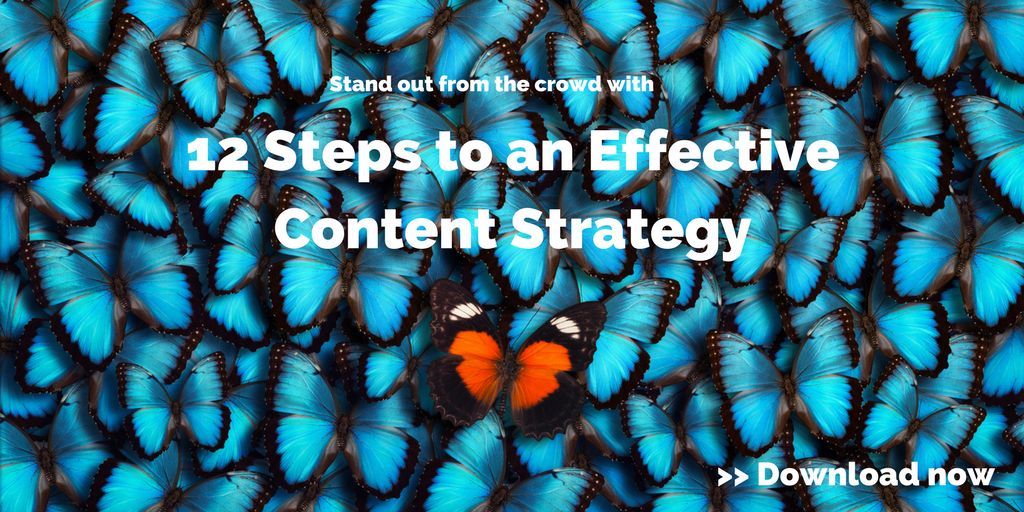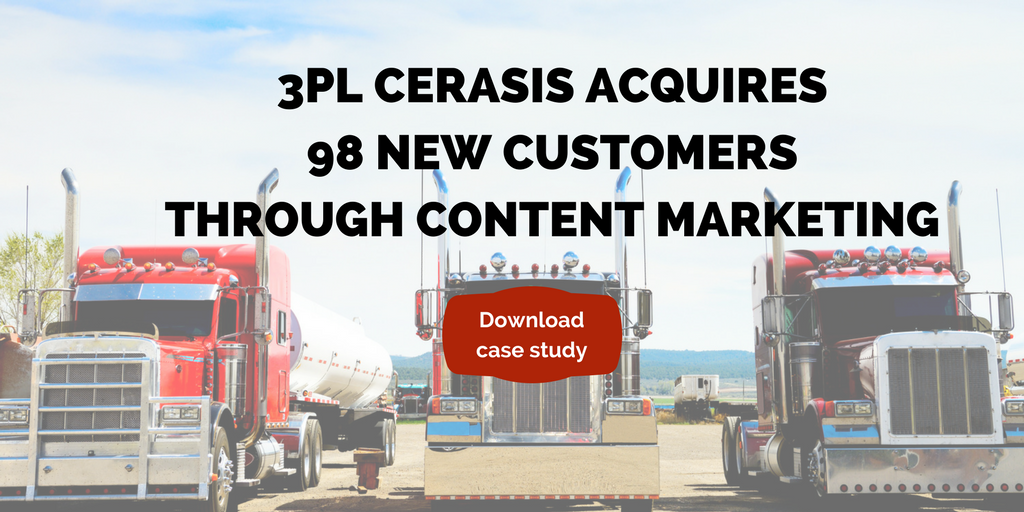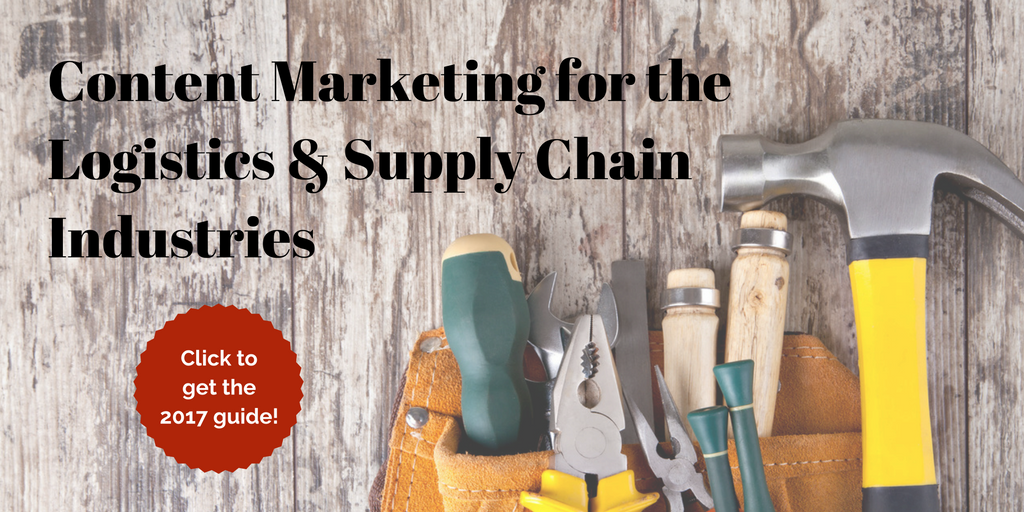
by Fronetics | Oct 24, 2018 | Blog, Content Marketing, Logistics, Marketing, Social Media, Supply Chain
Brands need to focus on the awareness and consideration stages of the buyer’s journey to build relationships and boost social media ROI.
Are you focusing on the right phases of the buyer’s journey in your social media strategy? The 2018 Sprout Social Index shows that customers prefer businesses to provide social media content that aids in awareness and consideration, not the end sale.
Misaligned priorities
Sprout Social’s 2018 Index found that users “want brand awareness and consideration stage content from brands on social, but 80% of social marketers are hyper-focused on awareness activities, leaving out the consideration piece of the puzzle.” When brands don’t meet the needs of their audience with consideration stage content, they’re missing out on building relationships and ultimately cutting into social media ROI.
[bctt tweet=”Sprout Social found a great deal of misalignment when it comes to what marketers post versus what consumers want to see on their social media platforms. ” username=”Fronetics”]
Sprout Social found a great deal of misalignment when it comes to what marketers post versus what consumers want to see on their social media platforms. Part of the issue is a failure to define ROI in the most productive way. Thinking about social media’s value in terms of direct attribution leads to a skewed focus on sales, and erodes the effectiveness of brands’ social media efforts. According to Sprout Social, “social’s true value isn’t in direct attribution — it’s in the awareness and consideration stages of the funnel.”
The right kind of content
Despite the misalignment, there is one area of overlap between what marketers focus on and what users want to see: “posts that teach.” Which brings us back to consideration stage content. “If you aren’t already, meet consumers in this sweet spot in the consideration stage,” suggests Sprout Social. This means taking users beyond recognizing your brand and into knowing where your expertise and thought leadership lies.
Educational content is key in the consideration stage. It’s important to remember that this kind of content doesn’t necessarily need to showcase your product to be valuable — it’s all about offering your audience the information and expertise they’re looking for. For B2B businesses, particularly the supply chain, this could mean anything from product demonstrations to think pieces about how to optimize production.
“The most enlightened social marketing strategy integrates awareness and consideration stage content — opening the door with entertainment and inspiration, then carrying audiences across the threshold with education, information about new product offerings, and discounts and sales,” says Sprout Social.
Diversifying focus between awareness and consideration is crucial to getting the most out of your social media efforts. As social networks home in on preserving the social aspects of their platforms, it’s all the more important for brands to align their activities with what users actually want to see, to stay relevant.
Related posts:


by Fronetics | Oct 22, 2018 | Blog, Content Marketing, Logistics, Marketing, Strategy, Supply Chain
Content is your sales team’s best friend. Use these 7 strategies for putting your content to work to convert and retain customers.
As we’ve written about before, content can help your sales team win business. But you need to take a close look at your sales process and be strategic about the times when content would be helpful — as well as the types of content that will successfully assist sales reps in educating and informing prospects. Here’s how content can support sales in each of the 7 stages in the sales cycle:
1) Land the first conversation
First impressions are critically important. Personalized content is ideal for helping sales teams make the most of their initial contact. For example, try initiating contact with a prospect through a live workshop that meets industry-specific needs. Prospects’ first impressions of your business will be that you understand their needs and have the tools and expertise to meet them.
[bctt tweet=”Personalized content is ideal for helping sales teams make the most of their initial contact. For example, try initiating contact with a prospect through a live workshop that meets industry-specific needs. ” username=”Fronetics”]
2) Get past an initial “no”
One of the most significant challenges for a sales team is receiving an initial “no” from a prospect. But with the help of content marketing, sales teams can often get past that initial rejection and turn it around. This is a great time to leverage not just your own content, but that of your prospect. Educate yourself on your prospect’s latest blog posts, and follow up with suggestions for how they can further optimize their content or business practices.
3) Educate them about a problem they didn’t know they have
Cultivating a fruitful relationship with a prospect is the best way to help your sales team land conversions. Content marketing is all about becoming a valuable resource for your prospects and customers, offering them more than just your products and services. As you learn about your prospect’s business, treat it as you would your own—where there are practices that need to be looked at, create a report and suggest fixes.
4) Nurture leads that aren’t quite ready to buy
Once again, the primary function of content marketing is relationship cultivation. Even when a lead isn’t ready to buy, content can help you nurture a relationship. When the time comes, that lead will turn to your business. Send personalized content throughout the customer lifecycle, demonstrating that you understand are ready to meet their needs.
5) Help them make their final decision about vendors
When a prospect is ready to make a decision about what vendor to use, chances are, they’ll go with the company that has demonstrated the most comprehensive understanding of their unique needs and challenges, and a readiness to anticipate and meet them. If you’ve created and shared relevant, personalized content throughout the sales funnel, you’re best positioned to be the vendor of choice.
6) Build lasting relationships with customers
Once a lead has converted, the role of content doesn’t stop. Too often, businesses lose customers by dropping the ball when it comes to nurturing ongoing customer relationships. Keep customers loyal by sharing personalized case studies, videos, and infographics even after they’ve chosen your business, demonstrating your ongoing commitment.
7) Turn customers into brand evangelists
So, your content has helped your sales team generate a lead, convert that prospect, and build a lasting relationship. What more can it possibly do? With ongoing cultivation, your customers can become brand ambassadors. But to make sure they are effective, you need to equip your most loyal customers with the tools they need to spread the word about your business. Referral incentives, shareable social media content, and guest blogging opportunities are just a few ways to turn customers into evangelists for your brand.
Related posts:


by Elizabeth Hines | Oct 18, 2018 | Blog, Content Marketing, Logistics, Marketing, Strategy, Supply Chain
The supply chain is increasingly seeing the value of moving to an inbound marketing strategy. Here’s what’s at the core of the change to inbound marketing.
Traditional marketing in the supply chain uses an outbound strategy. We’ve all done it. Taking out ads in trade publications. Sending direct mailings. Cold calling.
These types of approaches fight to get your brand name in front of prospective customers, hoping to get a marketing message that resonates in front of the right person at the right time.
Inbound marketing is different
Inbound marketing is different. It’s, well, confident. It showcases your industry merit rather than trying to convince people of it.
With inbound marketing, you publish relevant, informative content where your audience already is – your website, related social media, and other online industry channels – to add value at every stage of their buyer’s journey.
Prospective customers come to associate your brand with industry expertise. When they are ready to buy, they think of you. That’s an inbound content marketing strategy.
Why the supply chain is shifting to inbound content marketing
The supply chain is increasing seeing the value of moving to an inbound marketing strategy. What’s at the core of the change to inbound marketing?
On a theoretical level, it’s recognizing that your business has more to offer than its primary product or service. This is so very important. You also have a team of extremely knowledgeable industry experts with unique and informed perspectives.
But switching to an inbound content marketing strategy is also about recognizing that your customers want much more from you than just your product. The business to busienss (BtB) buying climate is growing longer and more complex, and customers today are demanding value outside the sales funnel. Traditional outbound marketing accomplishes neither of these.
[bctt tweet=”Switching to an inbound content marketing strategy is about recognizing that your customers want more from you than just your product. Customers today are demanding value outside the sales funnel. ” username=”Fronetics”]
Why inbound marketing is better for the supply chain
If that didn’t convince you, put simply, inbound content marketing is just more effective for four main reasons:
- Cost. Inbound marketing is typically less expensive than outbound. Hubspot reports that each sales lead costs approximately 61% less for organizations that employ an inbound strategy versus those that focus on outbound marketing.
- Measurability. Measuring your success with inbound marketing is considerably easier. For example, you’ll never know how many people saw your billboard, but you can measure exactly how many people read your blog post.
- Longevity. Digital content is often evergreen – meaning it’s forever relevant – and older posts that need an update can be easily optimized. Essentially, content lives forever and continues drive traffic long after you publish it. In fact, at Fronetics, about 80% of our traffic comes from posts that are 6 months old or older.
- Targetability. With inbound marketing, you only expend resources on prospects that are already looking for information about your industry, products, and services, making inbound marketing a much more targeted approach for your lead-nurturing efforts. Less expensive, easier to measure, lasts longer, and represents a more targeted approach? Seems like a no-brainer. But what’s the catch? Well, executing a good inbound content marketing isn’t easy, and it generally takes at least six months to yield results.
Executing a good inbound content marketing strategy
Done well, inbound content marketing is extremely effective. A good content marketing strategy is about understanding the questions and concerns that are particular to your customer base and about offering quality information and analysis that answers those needs.
The role of content in the supply chain and logistics industries is to grow brand awareness and customer engagement, increase lead generation and nurturing, and establish your company as an industry thought leader in the minds of your prospective customers.
An inbound marketing strategy helps you become more than just another business to customers. You can become a valuable resource for everything related to your products, services, and industry as a whole. Which is precisely what your potential customers are currently expecting from your supply chain and logistics business.
This post originally appeared on EBN Online.
Related posts:


by Fronetics | Oct 4, 2018 | Blog, Content Marketing, Logistics, Marketing, Strategy, Supply Chain
Guest posting can help you build your reputation as a thought leader, grow your contact list, improve your SEO, and expose your content to new audiences.
At Fronetics, we use guest posting as a part of our own — and many of our clients’ — content strategies. Essentially, we partner with a relevant influencer or company and swap content to post on each other’s blogs. It can be a really effective way to reach new, relevant audiences and provide interesting perspectives and voices to keep your core audience engaged.
What’s so great about guest posting?
Guest posting has all kinds of benefits. Every time you post as a guest, you expose your content to a whole new audience. We talk about the importance of exposure all the time when it comes to content marketing. Your biggest asset isn’t your products or services; it’s your expertise. Guest posting helps you establish your brand as a thought leader.
[bctt tweet=”Guest blogs can be a really effective way to reach new, relevant audiences and provide interesting perspectives and voices to keep your core audience engaged.” username=”Fronetics”]
In addition to posting with industry influencers and peer brands, guest posting for larger publications can be hugely beneficial, for obvious reasons. Not only are you introducing your brand and content to a broad audience, you’re associating yourself with an established authoritative source.
By the same token, having other brands author guest posts on your own blog is a great idea as well. When key influencers write for your blog, they bring their audience directly to you, allowing you to tap into a new and relevant set of prospects. Not only that, by inviting peers to contribute to your content, you’re forging and strengthening relationships within the industry.
Guest posting is great for SEO
We’re always talking about how to improve your SEO. One benefit of guest posting that’s often overlooked is that it can significantly improve your search engine rankings.
Search engines use backlinks from other websites, particularly popular ones, as part of their algorithms that determine how search results are ranked. According to online business expert Sarah Peterson, in a guest article for the Huffington Post, “You can use the opportunity of your guest post to include 1-2 backlinks to strong pieces of content you want to rank for.”
Grow your contact list
We all know that email marketing is hugely effective and profitable, if your contact list is strong and effectively segmented. Another often overlooked benefit of guest posting is that it has the potential to strengthen and enrich your email marketing efforts.
Because you’re being exposed to new audiences, both as a guest blogger and when guests write for your blog, you have the opportunity to target and cultivate new leads from relevant sources. Use guest posts as an opportunity to usher prospects to lead generation campaigns on your own website.
Says Peterson, “if you’re not using this marketing strategy, you could be leaving a ton of email subscribers on the table.”
How do you use guest posting in your content strategy?
Related posts:


by Fronetics | Sep 25, 2018 | Blog, Content Marketing, Logistics, Marketing, Strategy, Supply Chain
Armed with high-quality, substantive content, sales teams can use inbound marketing to close deals and boost sales. Here’s the content they need to advance purchasing decisions.
Aligning sales and marketing teams is not a new concept, but one that many companies don’t follow. Think about it: the ultimate goal in business is increased revenue from sales growth! In order to achieve this goal, it’s best to focus on what the buyers’ needs are at the individual stages of the buying process and to provide content to help them move along the sales funnel.
You’re asking yourself, “How do I do that?” Easy, start combining your sales and marketing efforts to maximize what each department does best. When done correctly, content marketing can support sales goals, making it easier to generate leads and helping the sales team close business.
Valuable and relevant content is not a sales pitch but can help the sales process. Arm your sales team with content that communicates valuable information to prospects so that they have the knowledge to make more informed decisions.
[bctt tweet=”Arm your sales team with content that communicates valuable information to prospects so that they have the knowledge to make more informed decisions.” username=”Fronetics”]
Moreover, concentrate on creating the kinds of content your target audience seeks, and distribute it through the platforms on which they seek it. How-to videos on YouTube? Thought leadership on LinkedIn? Optimize the material you distribute for each channel and use your sales team to further distribute your content.
But what kinds of content does your sales team need in order to close deals? Here to discuss our top suggestions is Frank Cavallaro, CEO and Founder of Fronetics.
Video: what content sales needs in order to close deals
Takeaway: teamwork is key
Sales and marketing teams that are aligned perform better. According to State of Inbound 2018’s latest survey, sales teams closely aligned with their marketing counterparts ranked the quality of marketing-sourced leads much higher than those that were rarely aligned or misaligned. That shows that when marketing and sales work together, everyone gets more of what they’re looking for — namely, leads and sales!
Related posts:









